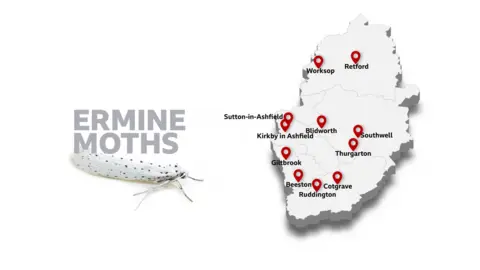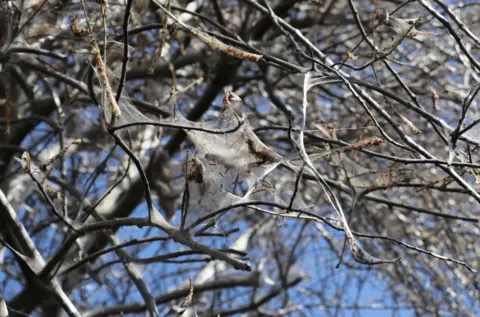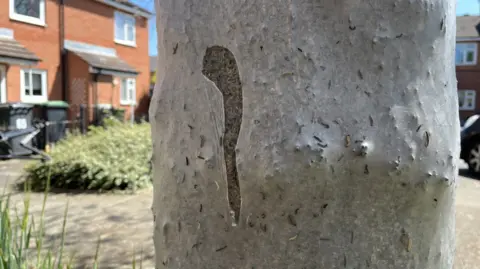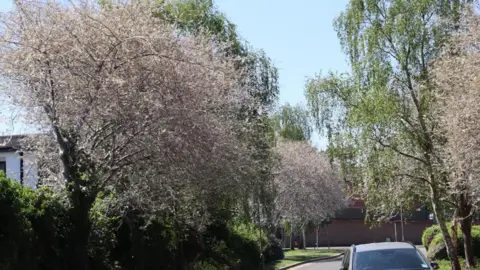Why are there so many web-covered trees this year?
 PA Media
PA MediaThis year has proved to be exceptionally popular for sightings of "spooky" web-covered trees, with social media abuzz with photos comparing the scenery to that of a horror film.
The culprit, Ermine moths, are a species which can be found across the UK.
However, people have been reporting their distinctive presence in places which they have never been seen before.
This has led to the question of what is special about 2025 - what makes it a great year to be a caterpillar, particularly a Bird Cherry Ermine caterpillar?
Here in Nottinghamshire, their distinctive presence has been identified from Rushcliffe to Retford, as well as beyond the county.
Dr Chris Terrell-Nield, from Nottingham Trent University, said a combination of factors had created "ideal conditions" for the caterpillars, but not necessarily for the moths they would become.

The silk webbing which covers the flora where the caterpillars emerge is spun shortly after they emerge from their eggs, as a defence mechanism.
Dr Terrell-Nield said because the eggs are laid in clusters, hundreds at a time, the caterpillars' webs can quickly overwhelm entire trees.
"Think about it, these are animals which are basically living on trees in the springtime, just at the time of year when there's maximum potential for predation."
"Nice juicy caterpillars, and lots of birds wanting to feed their young," he said.
The main threat to this protective webbing is heavy rain and wind, but Dr Terrell-Nield said this year's spring had been mild and dry.
He theorised this is partially why people had noticed them more than normal.


"The webs which normally perhaps get damaged... haven't been damaged," he said. "Often they just get washed away and shredded by rain, but we haven't had any."
Meanwhile on the flip side, the threat of predators has also been diminished, he added.
"The number of house sparrows that we have in our gardens has just been going down, and down, and down," he said.
"That means there is less predation pressure from an an animal which particularly likes these caterpillars. Now other bird species have also not done particularly well at the same time."
He has added that the species are always here in the county, so there is nothing bringing them into Nottinghamshire beyond the ordinary.
It is instead that there are more caterpillars than normal.
 Supplied
SuppliedHowever, Dr Terrell-Nield said all insects experienced population "booms and busts", and this was no different for the Bird Cherry Ermine caterpillar or moth species.
He noted last year was a "really, really poor year" for butterflies.
Despite the strong showing of caterpillars this year, partially thanks to the dry weather, it is the same weather which could be detrimental when they turn into moths.
"We think about caterpillars as eating vegetation, and the leaves on trees and the grasses and all kinds of things... but of course the adults are a different story," he said.
The entomologist has said that adult moths are "fluid feeders" which rely on nectar.
"For a plant, nectar is actually relative expensive, because it's mostly water. So if it's very dry, the plant tends to produce less nectar," he said.
Therefore, despite the abundance of caterpillars this year, there is a risk of "an impending crash" as we approach 2026.

Follow BBC Nottingham on Facebook, on X, or on Instagram. Send your story ideas to [email protected] or via WhatsApp on 0808 100 2210.
